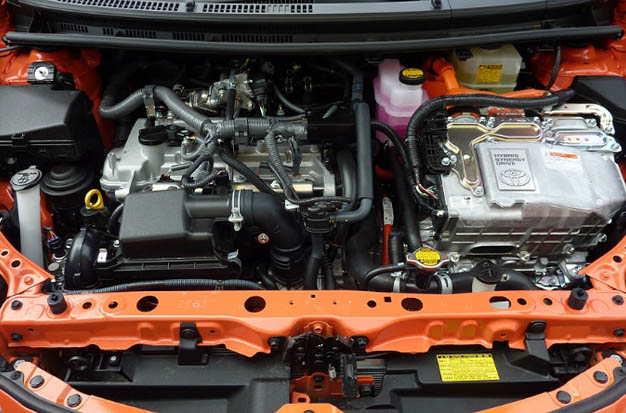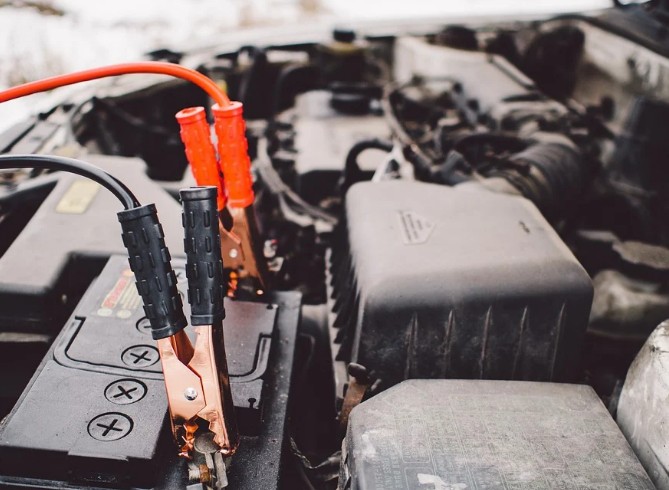
How Does a Car Battery Work – What You Need to Know About Car Battery
Since the lead plates inside the battery are submerged in acid, we refer to them as lead acid batteries. The chemical reaction that results from this releases energy and gives us voltage and current.
What’s A Battery?
Let’s examine how batteries work generally before delving into the specifics of car batteries. According to the folks at NASA, a battery is “a device that translates chemical energy into electricity.” Cells make up batteries. The real energy is housed within these cells. They can instantly convert stored chemical energy into electrical energy. Your appliances, including your electric toothbrush and TV remote, are all powered by this.
How Do Automotive Batteries Work?
When the ignition switch on a car is turned ON, a series of chemical reactions begin inside the battery that produce electricity. The alternator, a machine that keeps producing electrons and storing them when it can, maintains this sequence.
With the aid of a belt that transfers energy to the battery, it performs the generating portion. I’m sorry, but I don’t think your car will start without these series of events.
To get things going and grooving, most car batteries rely on a lead-acid chemical reaction. These batteries fall into the “SLI” category. SLI stands for “starting, lighting, and ignition.” To power your lights, accessories, and engine, this kind of battery delivers energy in brief bursts. The alternator provides power for the car after the battery jumpstarts it. The majority of automobiles ship from the factory with a standard SLI battery. Find out more about the various car battery types.
HOW CAR BATTERIES WORK
- A typical SLI battery has six cells. The two plates or grids in each cell are made of lead and lead dioxide, respectively. The energy output per cell is approximately 2 volts. The majority of car batteries have six cells, making them 12-volt batteries.
- The two plates react as a result of the sulphuric acid solution that is applied to them. The acid functions as a catalyst, to use technical terms.
- The lead dioxide plate will be affected by this acid, causing a reaction that will result in the production of lead ions and lead sulphate from the plate.
- Lead sulfate and hydrogen are created when the ions from the lead dioxide plate interact with the plate next to it.
- Electrons are created as a result of a chemical reaction. Electricity is produced as the electrons whiz past the plates. Your car’s engine, headlights, and radio all operate with electricity that is released from the battery terminals.
- Due to the complete reversibility of this chemical process, your battery can be jump-started and charged continuously for the duration of its useful life. Lead and lead dioxide will form on the battery plates when the correct voltage and current are applied, allowing for endless battery reuse.
Can I Use My Current Car Battery?
A typical battery will only last about three to five years, despite the fact that lead-acid batteries are incredibly dependable. This is true despite the temperature changes, motion, and confined spaces under your hood. See how much power is still in your car’s battery by visiting our Virtual Battery Tester. You can also visit your neighborhood Firestone Complete Auto Care for a quick and cost-free battery test. With a quick preventative inspection, we’ll keep your car running more smoothly and for longer.
Why Do Car Batteries Get Used?
Usually, a car’s engine bay is where you’ll find the battery. The starter motor, a tiny electric motor, which is powered by the battery, is what is initially used to start the engine. The ignition system, which kicks off the combustion of fuel, is also powered by it.
The starter motor attaches a tiny gear to the motor’s flywheel. The combustion engine is started by turning this, and after the small gear disengages, the engine continues to run on its own. The starter motor will draw an enormous amount of current—possibly hundreds of amps—for only a brief period of time because it needs to exert a tremendous amount of force to turn the flywheel. The battery’s ability to store energy will be reduced by this strong current. Therefore, we must top it off again.
There is an alternator attached to the engine. The engine rotates the alternator, which produces electricity as it does so. The battery is recharged by feeding this back into it.
The alternator stops spinning and recharging the battery if the engine is turned off, so the battery will continue to supply all of the electrical power until it is dead. We need to jump start the car because at this point the battery is unable to supply enough power to turn on the engine.

Structure Of A Car Battery
A car battery is different from the cells found in more compact electronic devices like a hairdryer. In series with it are six additional smaller cells. Through this connection, the energy from each cell is added together to produce 12 volts.
Even though the correct calculation shows 12.6 volts, the 12 volts come from each cell (two volts each). Energy emissions still operate under the same general principle. The volts that some battery models emit, however, may differ.
How Does A Car Battery Charge?
A dependable charging method is required because users must quickly recharge their car batteries to keep them from running out of juice. Without it, the battery will undoubtedly fail when it needs to power a car.
In a typical modern vehicle, the battery is constantly being charged by the alternator. The dynamo, however, performs the charging functions in older car models. The alternator cables’ rotor is turned by an engine-driven system that is driven by a belt, which is reliant on both.
When an iron clip ring on the beam is scratched by a copper carbon, tiny particles become magnetized and add electrons to the rotor. The electricity inside them is created by the electromagnet inside the stator coil rotating.
Alternating electron flows are what create electricity. Accordingly, depending on the rotor’s direction, it moves both forward and backward. But it must be rectified to create a direct current in order to operate more efficiently.
Direct current is used by the dynamo, but it is less effective than engine speed. It is heavier than an alternator, though, and that much is certain.
The dashboard illuminates brightly as a warning sign when it doesn’t charge correctly. The majority of the time, this occurs when the engine shuts off.
Are Car Batteries The Same As Ev Batteries?
The battery in your EV is not the same as these ones, no. Compared to the lithium-ion batteries in your EV, lead acid batteries are very different. To begin with, lead and a water/sulfuric acid mixture make up the majority of lead acid batteries, as you already know. Lithium-ion batteries, on the other hand, are composed of substances like lithium, cobalt, and graphite.


Average Rating